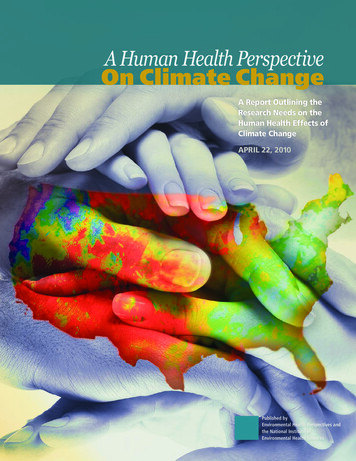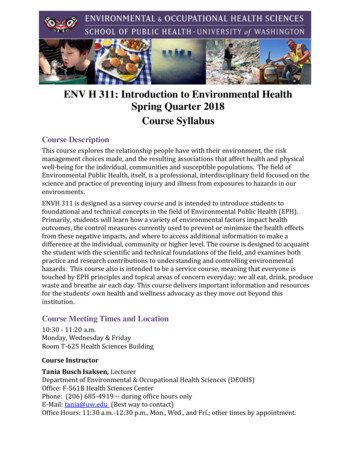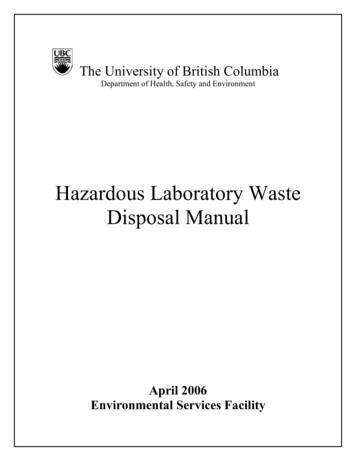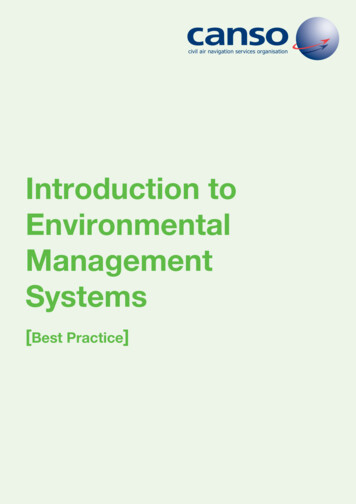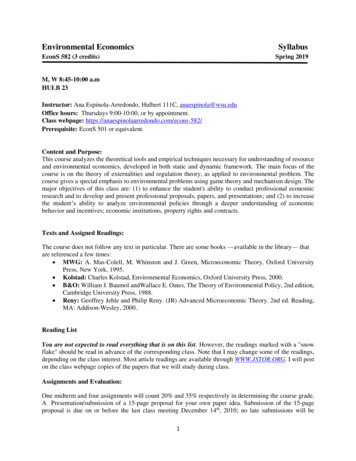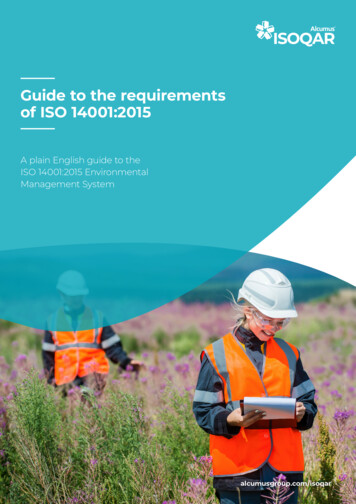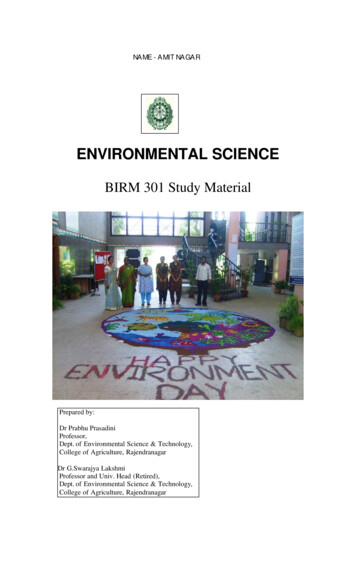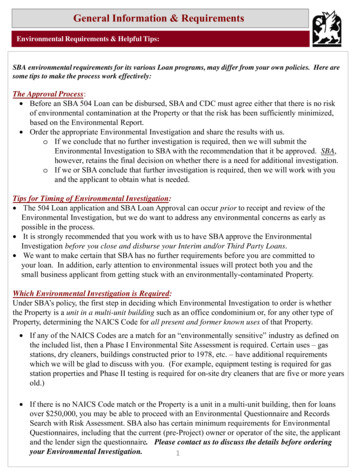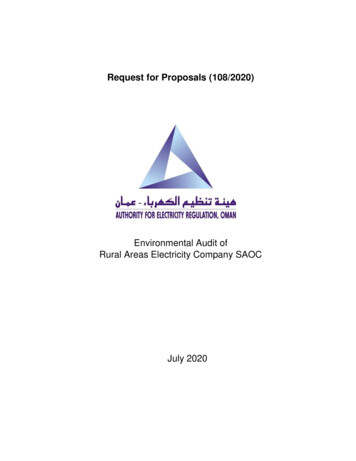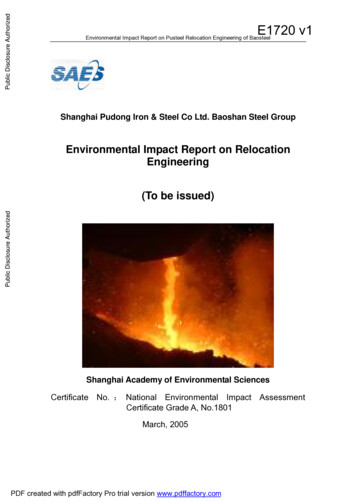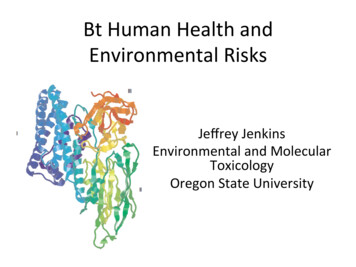
Transcription
Bt Human Health andEnvironmental RisksJeffrey JenkinsEnvironmental and MolecularToxicologyOregon State University
History of the PathogenBacillus thuringiensis (Bt) 1902 – IniJally isolated from diseased Japanese silkworm larvae. 1911 – Again isolated from diseased Mediterranean flour moth larvae. 1938 – First used as an experimental insecJcide. 1958 – Bt biopesJcide used on commercial scale in the United States. 1961 - Bt isolate containing delta-endotoxins first registered in the US. 1990 - Organic Foods ProducJon Act - Bt use allowed on organic crops 1995 - EPA registered the first Bt plant-incorporated protectants. 1998 – Bt delta-endotoxin isolates re-registered by EPA.
Bacillus thuringiensis (Bt) Taxonomy Bacillus thuringiensis (Bt) belongs to the familyBacillaceae, with 2 genera:– Clostridium with 205 species– Bacillus with 33 species. There are about 19 Bt subspecies; 5 are used inpest control:– Bt kurstaki (Btk) - forest pests– Bt israelensis (BJ) - mosquito control– Bt aizawai, morrisoni, and san diego - crop pests
Bacillus thuringiensis (Bt)mode of acJonBacillus thuringiensis(Bt) is an endosporeforming bacteriumcharacterized by thepresence of a proteincrystal within thecytoplasm of thesporulaJng cell.SporeProtein body of regularly shapes crystals
Bacillus thuringiensis (Bt)mode of acJon(a) Crystals dissolve in gut juicefollowing ingesJon.(b) Gut proteases clip C and Nterminals of Cry proteins.(c) AcJvated toxin binds toreceptors on the epithelial cellmembrane.(d) Structural rearrangement allowsa two-helix hairpin to insert intothe membrane.(e) Inserted toxins form poresprobably as oligomers1.(f)Pore formaJon causes cells toburst, resulJng in the death ofthe insect larva(g) Spores germinate1molecular complex that consists of a few monomer units
Bacillus thuringiensis (Bt)mode of acJon Toxic endpoint requires specific gut condiJons:– target membrane composiJon/receptors– pH– specific proteases For example, solubilizaJon of Cry protoxinsbefore acJvaJon by gut proteases, depends onthe highly alkaline gut pH of Lepidoptera andDiptera.
Bt Cry toxins(a) RelaJve lengths of Cry protoxins and posiJon of the five conserved blocks; (b) Structure of an acJvated toxin, Cry1Aa
Btk Commercial Products Common trade names - Foray 48B, Biobit,Condor, Cutlass, Dipel, Full-Bac, Javelin, MPeril, and MVP FormulaJons - liquid concentrates, wefablepowders, ready-to-use dusts, and granules
AcJve ingredient – 12.65%Other ingredients – 87.35%Tank-mix with spreader-sJckerAdjuvantFor Organic ProducJon –7 CFR 205 NaJonal Organic Program§205.601 SyntheJc substances allowedfor use in organic crop producJon.(m) (1) EPA List 4—Inerts of MinimalConcern.
Risk Assessment and Management
PesJcide registraJon under FIFRA 40 CFR 158 Rulemaking; data requirements The Harmonized Test Guidelines Used by OPP, OPPTS, and OECD Both are constantly under review and arefrequently updated
PesJcide ReregistraJon The 1988 amendments to the Federal InsecJcide, Fungicide, andRodenJcide Act (FIFRA) authorized EPA to conduct the pesJcidereregistraJon program.– review supporJng scienJfic studies– update human health and ecological risk assessments using currentscience– cancel or re-register uses– develop risk miJgaJon measures (new label language) DeterminaJon summarized in a ReregistraJon EligibilityDecision (RED) Reregister a pesJcide if it can be used “withoutunreasonable adverse effects on human health or theenvironment.”
Data for Bt reassessment Registrants submit new data voluntarily or in response to a EPA data call in. Data comes from studies that they follow a relaJvely uniform set of guidelines orstudy protocols. These guidelines are harmonized with the EU/other developed countries. The Office of Chemical Safety and PolluJon PrevenJon (OCSPP) harmonizedguidelines are organized in the following 11 series:–––––––––––810 - Product Performance Test Guidelines830 - Product ProperJes Test Guidelines835 - Fate, Transport and TransformaJon Test Guidelines840 - Spray Drin Test Guidelines850 - Ecological Effects Test Guidelines860 - Residue Chemistry Test Guidelines870 - Health Effects Test Guidelines875 - OccupaJonal and ResidenJal Exposure Test Guidelines880 - Biochemicals Test Guidelines885 - Microbial PesJcide Test Guidelines890 - Endocrine Disruptor Screening Program Test Guidelines
Data for Bt reassessment Studies accepted by U.S. EPA for pesJcide registraJon orreregistraJon purposes must comply with Good LaboratoryPracJces (GLPs). GLPs are federal regulaJons; 21 CFR Part 58 (U.S. Food and DrugAdministraJon) and 40 CFR Part 160 (U.S. EPA) GLP regulaJons describe the minimal standards for conducJnglaboratory and field studies that support or are intended to supportpesJcide registraJon or reregistraJon. U.S. EPA also considers informaJon in the open literature as a partof the registraJon or reregistraJon process; greater weight is givento those studies that were specifically designed to be used for riskassessment purposes, and those conducted under GLPs.
Bt RED Summary (1998) This decision includes a comprehensive reassessment of the requiredtarget data and the use paferns of currently registered products. The Agency has concluded that all uses, as prescribed in this document,will not cause unreasonable risks to humans or the environment andtherefore, all uses are eligible for reregistraJon. To miJgate risks the Agency is requiring:– ReevaluaJon and standardizaJon of the manufacturing process for eachregistered technical grade of the acJve ingredient– Label with revised percent acJve ingredient, a statement of explanaJon, andthe specific toxins responsible for the pesJcidal acJvity.
CiJzen ConcernsBacillus thuringiensis – Safety Review (2008)Roy Upton, Lynefe Caspar, CiJzens For Health Buferflies (including the monarch species) are parJcularly atrisk in regard to Btk exposure. Bt is closely related to Bacillus cereus, a bacterium that causesfood poisoning. French scienJsts called for a ban on Bt pesJcides aner findingthat inhaled spores caused lung inflammaJon, internalbleeding and death in lab studies.
CiJzen Concerns Foray 48B is composed of Bacillus thuringiensis var. kurstakias the acJve ingredient, along with a large percentage ofunidenJfied inert ingredients. Since pesJcide manufacturers are required to disclose onlythe “acJve” ingredients in their products, the names of the“inert” ingredients in the formula have not been released tothe public lifle is known regarding the short-term, longterm, or synergisJc effects of these potenJally hazardouscompounds in humans or in the environment.
CONCLUSIONS: PesJcide registraJonshould require full assessment offormulaJons.EvaluaJons of pesJcides under theNaJonal Environmental Policy Act,the Endangered Species Act, andsimilar statutes should include impactassessment of formulaJons.Environmental monitoring forpesJcides should include inertingredients.To enable independent research andrisk assessment, inert ingredientsshould be idenJfied on productlabels.
Foray 48B volaJle Inerts11vanNefen et al. 2000
CiJzen Concerns In a 1996-1997 Foray 48B was aerially applied over parts ofEast Auckland, New Zealand; 375 people reported a widevariety of adverse effects. For a second aerial spraying in 2002 there were 1397documented health symptoms reported by 315 people.
CiJzen Concerns An examinaJon of hospital discharge data following the 2002-2004Auckland Btk spraying campaign, revealed that:– asthma discharge rates doubled over the period 2002-mid 2004 for boys aged0 to 4 years old in the [spray] exposed populaJon.– discharge rates also increased for girls aged 0 to 4 and 5 to 14 (50% and 80%increases, respecJvely).– comparing the year 2001 with 2004, there was an increase in asthmaadmissions in residents inside the spray zone, but a decrease in asthmaadmissions in residents just outside the spray zone. These trends werestaJsJcally significant.– monthly hospitalizaJon rates among the exposed group gradually increasedover the period under study while naJonal rates remained relaJvely constant,resulJng in staJsJcally significant increases for the spray populaJoncompared to naJonal rates in years 2003 and 2004.
CiJzen Concerns In a 2000 campaign to combat the Asian Gypsy Moth,Foray 48B was aerially applied 3 Jmes over parts ofSeafle, Washington. Adverse effects reported by 59 individuals followingthe sprayings included: cough, wheezing, headache,trouble breathing, sore throat, nasal congesJon,irritated eyes, skin rashes, upper respiratory and nasalsymptoms, flu-like or viral symptoms, worseningasthma and/or asthma afacks, and allergic bronchiJs(Washington State Dept. of Health 2001).
Although health risks topesJcides containing Bt havebeen minimal, the potenJalallergenicity of these organismshas not been evaluated.Therefore, a health survey wasconducted in farm workersbefore and aner exposure to BtpesJcides.Exposure to Bt sprays may leadto allergic skin sensiJzaton andinducJon of IgE and IgGanJbodies, or both.
pest control: - Bt kurstaki (Btk) - forest pests - Bt israelensis (B ) - mosquito control - Bt aizawai, morrisoni, and san diego - crop pests Bacillus thuringiensis (Bt) mode of acJon Bacillus thuringiensis (Bt) is an endospore-forming bacterium characterized by the presence .
